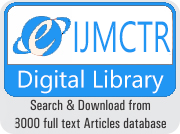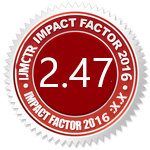Abstract :
We have seen that the nominal power of single Wind Energy Converter Systems has been steadily growing up and reaching power ratings close to 10 MW. In the power conversion stage, we found that the medium-voltage power converters are replacing the conventional low-voltage back-to-back topology. Due to this reason the Matrix Converters interfaced have appeared as a promising solution for Multi-MW WECSs due to their characteristics such as modularity, reliability and the capability to reach high nominal voltages. In 2009-10, the country imported 159.26 million tons of crude oil which amounts to 80% of its domestic crude oil consumption and 31% of the country's total imports are oil imports. The growth of electricity generation in India has been hindered by domestic coal shortages and as a consequence, India's coal imports for electricity generation increased by 18% in 2010. So in this paper I try to develop fuzzy-logic based control strategy to capture maximum wind energy and reduce harmonics for proposed wind generation system and then develops fuzzy control for indirect matrix converter under steady-state and dynamic conditions. With these assumptions finally try to validate the proposed wind generation system in simulation environment to validate the developed control algorithms under various balanced /unbalanced conditions. Finally evaluate the performance of the developed wind generation system and its controls under various balanced/unbalanced wind conditions. During investigating details the robustness of the steady-state and dynamic performance of the developed system under various balanced/unbalanced conditions using simulation software I presents the experimental performance evaluation of the developed matrix converter prototype with wind emulator. Keywords: Wind energy conversion system (WECS), Matrix converter, Wind emulator, space vector pulse width modulation (SVPWM), permanent magnet synchronous generators (PMSGs), wind farms (WFs).



